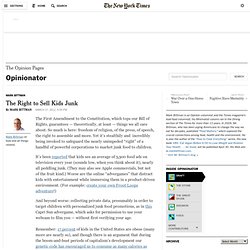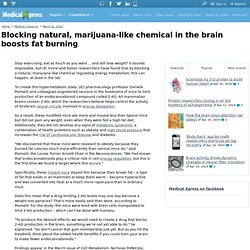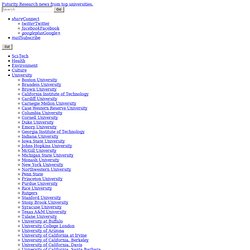

Korean Designer Reimagines Food Storage, Preservation, Without A Fridge. Korean designer Jihyum Ryou reimagines food storage without a fridge.

In his project ‘Save Food From The Fridge’ Ryou uses traditional word-of-mouth knowledge and everyday objects to preserve food in an eco-friendly way, without the use of a fridge to keep the food fresh. “Observing the food and therefore changing the notion of food preservation, we could find the answer to current situations such as the overuse of energy and food wastage.”
Ryou wrote on his website. “My design is a tool to implement that knowledge in a tangible way and slowly it changes the bigger picture of society. I believe that once people are given a tool that triggers their minds and requires a mental effort to use it, new traditions and new rituals can be introduced into our culture.” £200,000 test-tube burger marks milestone in future meat-eating. Lab-grown burgers will be served up in October Link to video: Lab-grown burger to be served up in October Lurking in a petri dish in a laboratory in the Netherlands is an unlikely contender for the future of food.

The yellow-pink sliver the size of a corn plaster is the state-of-the-art in lab-grown meat, and a milestone on the path to the world's first burger made from stem cells. Dr Mark Post, head of physiology at Maastricht University, plans to unveil a complete burger – produced at a cost of more than £200,000 – this October. Growing Plants in the Dark. While sunlight contains all colors, the dominant type of chlorophyll in plants only needs purple light to function.

This simple fact has big implications for the future of farming. Crops planted in soil, of course, depend on the sun, while commercial greenhouses use white light to grow their crops. All that extra red, green and yellow energy is wasted on the plants. PlantLab has taken advantage of chlorophyll’s little quirk. By using red and blue LEDs to create purple light, they have dramatically cut the energy needed to grow plants indoors. The Right to Sell Kids Junk. The First Amendment to the Constitution, which tops our Bill of Rights, guarantees — theoretically, at least — things we all care about.

So much is here: freedom of religion, of the press, of speech, the right to assemble and more. Yet it’s stealthily and incredibly being invoked to safeguard the nearly unimpeded “right” of a handful of powerful corporations to market junk food to children. It’s been reported that kids see an average of 5,500 food ads on television every year (sounds low, when you think about it), nearly all peddling junk. (They may also see Apple commercials, but not of the fruit kind.) Worse are the online “advergames” that distract kids with entertainment while immersing them in a product-driven environment. Pig ears and donkey butts: 5 foods that could save the world. Feeding the Tiny Humans of the Future: Amsterdam's Disproportionate Restaurant - Lifestyle. Since the dawn of space travel, scientists have approached the problem of human survival in such a hostile environment from two opposing angles: adapting the environment to humans, or vice-versa.

The former approach has provided most of the solutions so far: spacesuits and spaceships shield humans from extreme temperatures and radiation, and one day, greenhouses may allow earth's crops to grow on Mars. Blocking natural, marijuana-like chemical in the brain boosts fat burning. Stop exercising, eat as much as you want ... and still lose weight?

It sounds impossible, but UC Irvine and Italian researchers have found that by blocking a natural, marijuana-like chemical regulating energy metabolism, this can happen, at least in the lab. To create this hypermetabolic state, UCI pharmacology professor Daniele Piomelli and colleagues engineered neurons in the forebrains of mice to limit production of an endocannabinoid compound called 2-AG. All mammalian brains contain 2-AG, which the researchers believe helps control the activity of forebrain neural circuits involved in energy dissipation. As a result, these modified mice ate more and moved less than typical mice but did not gain any weight, even when they were fed a high-fat diet.
Additionally, they did not develop any signs of metabolic syndrome, a combination of health problems such as obesity and high blood pressure that increases the risk of cardiovascular disease and diabetes. The Lab Store. In The Future, You Will Eat Your Food Packaging, And It Will Be Delicious. Here’s a solution to our ever-growing plastic problem: package food and beverage items in edible packaging that’s actually good enough to eat.

Dr. David Edwards, a professor at Harvard, is working on it. After creating Breathable Foods and an energy capsule, Edwards moved on to WikiCells, an edible packaging technology. The WikiCells project began a few years ago when Edwards collaborated with French designer François Azambourg on an edible bottle that uses nature’s "natural packaging" as an inspiration for more artificial packaging. Had your sugar fix today? Treating sugar as an addiction, Bart Hoebel demonstrates withdrawal, binging and brain chemistry changes in rats.

PRINCETON (US)—Scientists now have proof why those sugar cravings are so hard to ignore. New evidence suggests sugar can be addictive, wielding its power over the brain in a manner similar to drugs like nicotine and cocaine. “We have the first set of comprehensive studies showing the strong suggestion of sugar addiction in rats and a mechanism that might underlie it,” says Princeton professor Bart Hoebel, who led the study. Hoebel believes the findings eventually could have implications for treating people with eating disorders. Hoebel’s team and researchers from the Princeton Neuroscience Institute have been studying signs of sugar addiction in rats for years.
Slim Chips by Hafsteinn Juliusson. Milan 2010: designer Hafsteinn Juliusson of Iceland and Italy presented flavoured paper snacks in Milan last week.

Called Slim Chips, the snacks are made of edible paper with organic colours and flavours in peppermint, blueberry and sweet potato. See all our stories about Milan 2010 in our special category. Here's a tiny bit of text from Juliusson: Slim Chips are good and they contain no calories. Instead of getting fat you can now eat paper with different flavors.